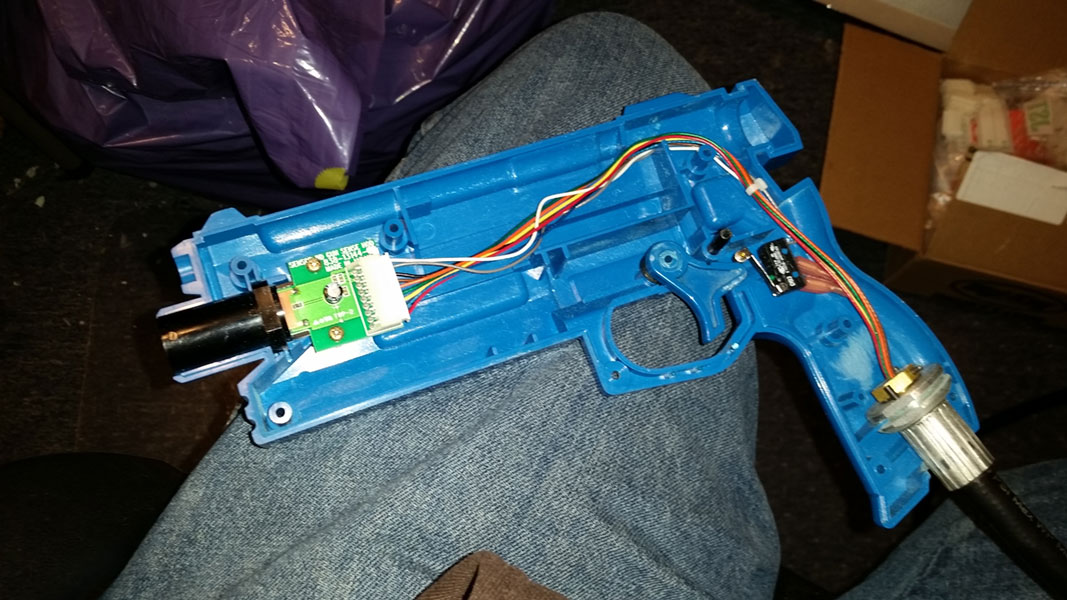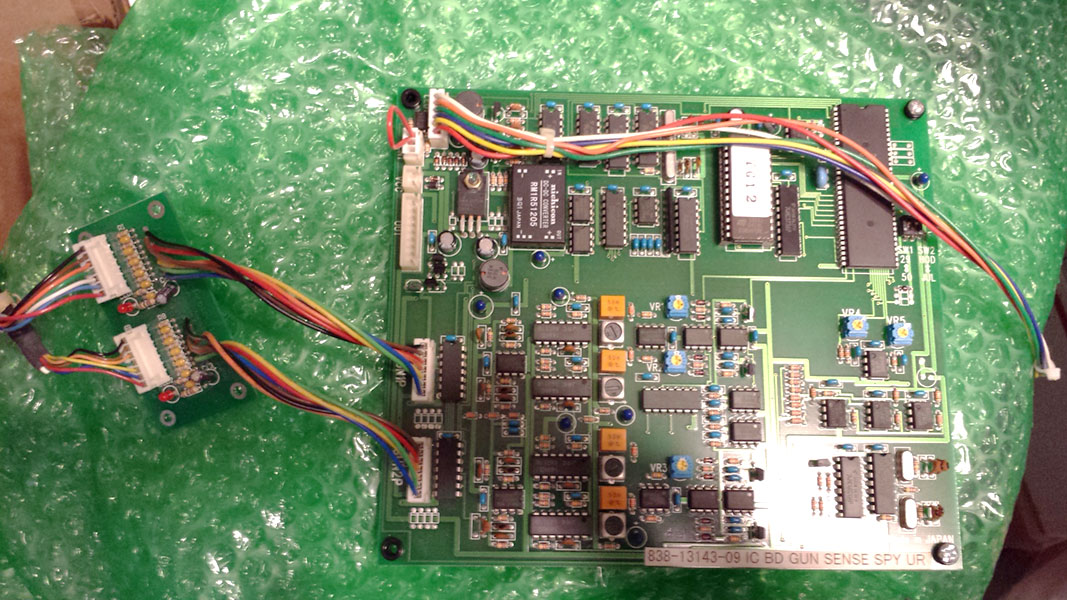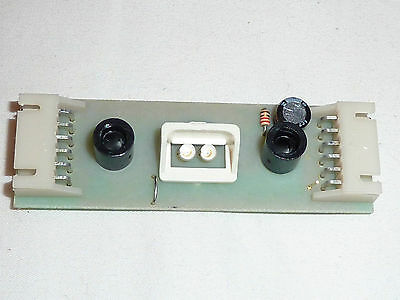In 1997 Sega released Jurassic Park The Lost World Arcade; a Light Gun Shooter on the Model 3 Arcade hardware. This was the first game to use Sega’s new IR gun technology, a system that they’ve used for nearly every light gun game they’ve produced since.
A Simplified Explanation of older Light Guns
Most classic light gun games used a light gun that required the use of an analog CRT Monitor. These had a simple light sensor in the gun that could detect the moment in time when the screen was drawing the specific pixel the sensor was pointed at, this would then be compared to the sync pulse that was being sent out to the monitor at that moment. The result is that by knowing which pixel was being drawn when the gun detected a pulse it would know which pixel the gun was pointed at.
This was a great system because of how inexpensive and accurate it was, but it had some drawbacks, namely it required that you were using a CRT monitor, AND it required that the monitor functioned in an analog fashion. Any modification or delay to the analog video signal would cause the system to not work. With Sega’s Model System arcade hardware they were starting to use higher resolution CRTs which were harder for the light sensors to pick up (higher resolution means smaller, pixels, means less light output per pixel, and more difficult to track). Not to mention Digital displays were on the horizon which could bring with it other issues. So Sega went with something new.
Interestingly enough, Jurassic Park The Lost world really is the turning point for this. Virtua Cop and Virtua Cop 2 ran on the Model 2 hardware and used the classic CRT style guns with a special IO board that communicated the gun position over a serial connection. Jurassic Park the Lost World on Model 3 hardware may have shipped with Sega’s “Type II IR” Gun setup, but it actually also functions with the Virtua Cop CRT Guns and Gun IO board; meaning that Sega considered both options for the game.
How Do the Sega IR Guns work?
The technology behind the Sega IR Guns was actually created by a Japanese company named OHMIC you can see their technical description of it here: http://www.ohmic.co.jp/cat/zahyou-01.html. Because this isn’t a Sega specific technology, versions of this tech have been used by other companies as well. Namco, Konami and Taito all have games that use it.
Basically there are 3 components to this setup,
1. a chain of 10-12 Addressable IR LEDs explicitly positioned around the parameter of the display (see photo below).
2. IR motion sensors in the gun housings.
3. the “Gun Sense” board (essentially the Gun IO, see photo above).
A common misconception is that the LEDs around the monitor are “Sensors” when they’re really just dumb LEDs. Another common misconception is that the sensors in the Guns are cameras, which they are not; they’re actually more like IR motion sensors which is able to detect changes in IR light across different “quadrants” of the sensor’s view.
The Gun Sense board illuminates the addressable LEDs one at a time and takes an IR intensity reading from each quadrant of the sensor in the gun. Because it knows the position of each LED and the intensity of each quadrant for each LED it’s able to determine where the gun is being pointed with very good accuracy.
The Output from the Gun Sense board is an analog voltage between 0 and 5V for both the X and Y axis. I find this to be an ingenious way to communicate the gun position for a number of reasons. Firstly, it means that the Gun setup is stand-alone and communication is 1-way from the Gun Sense board out. This means that you don’t even need a game board to use it. Secondly it mean that ANY system that accepts an analog input can use these guns.
You could technically play a racing game using these guns and simply point them toward the left and right of the screen to steer. More practically it means that these guns can be used with any game that uses Analog mounted guns, such as Terminator 2: Judgement Day or The Ocean Hunter.
Inversely it also means that any game designed to use these guns could be played with a mounted gun, or even an analog joystick. It’s incredibly versatile and modular; abstracting the guns controls from the main hardware the same way joysticks and buttons are. Of course the biggest benefit is the fact that it doesn’t need a display at all for the guns to work. you could position the LEDs around a chalk-board and as long as you supply power to the Gun Sense board the system will output an analog signal identifying where the gun is being pointed.
Screen Out and Triggers
So we’ve talked about how this system tracts the gun’s position and how it outputs that information, but one important thing to note is that with analog data there is no “null”. That is to say while it can communicate a position it cannot communicate the absence of a position. With analog data 0V and 0V is the same as the top left of the screen So in order to communicate that the gun was not pointed at the screen at all, there is a digital output pin on the Gun Sense board. Games Designed for use with this system then accept that signal as a button input. During a “Screen Out” the analog data does report 0V and 0V but the screen out signal is the difference between “top left of screen” and “not pointed at the screen”.
Triggers on the guns are actually routed through the Gun Sense board as well, though it doesn’t appear it actually uses it for anything. Rather, the signal is simply routed from the gun input header to the Gun Sense output header. If nothing else this was likely done to simplify wiring. Games that have buttons in addition to the trigger or other functions such as rumble, or recoil are all handled completely separate from the positional tracking system.




wonderful and interesting article! thx